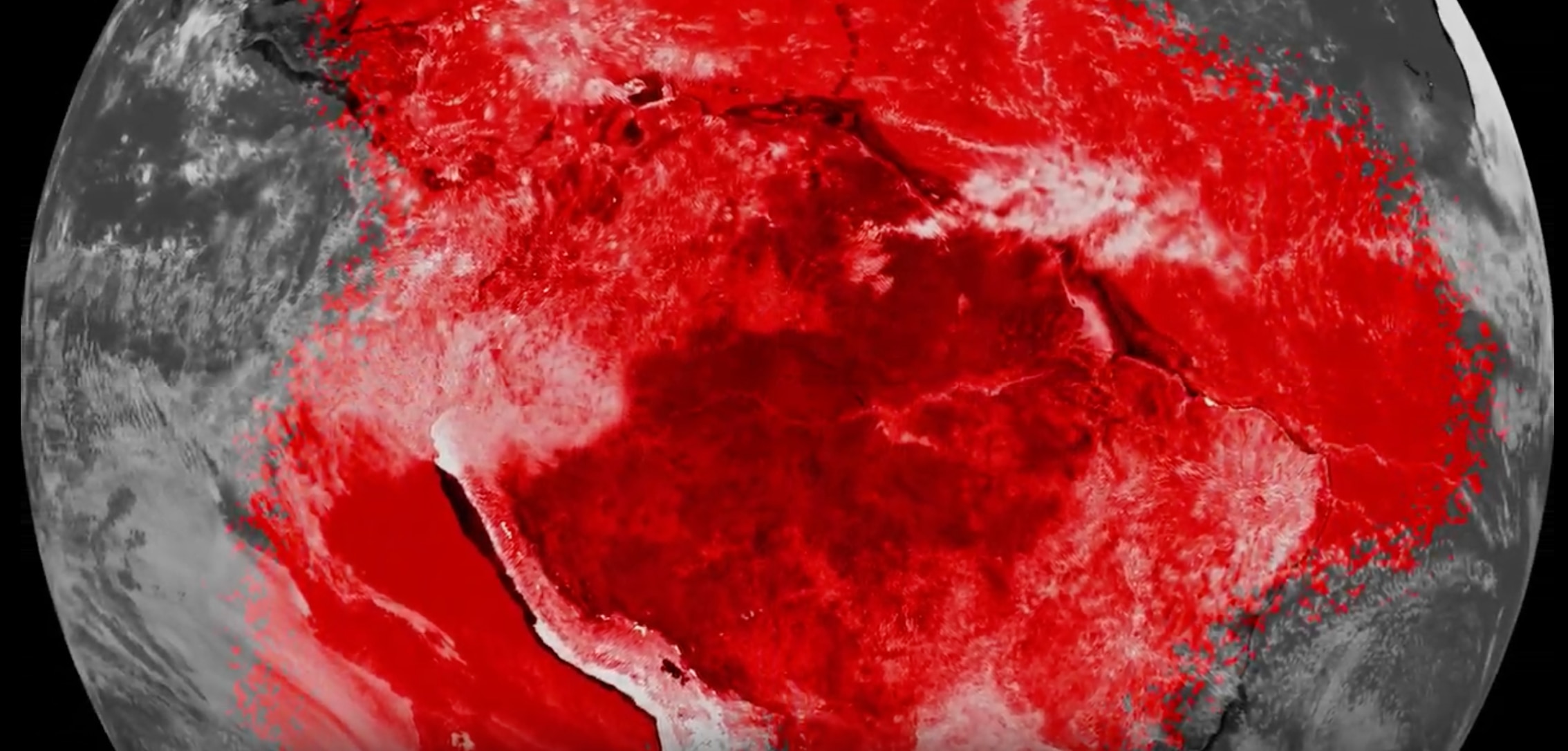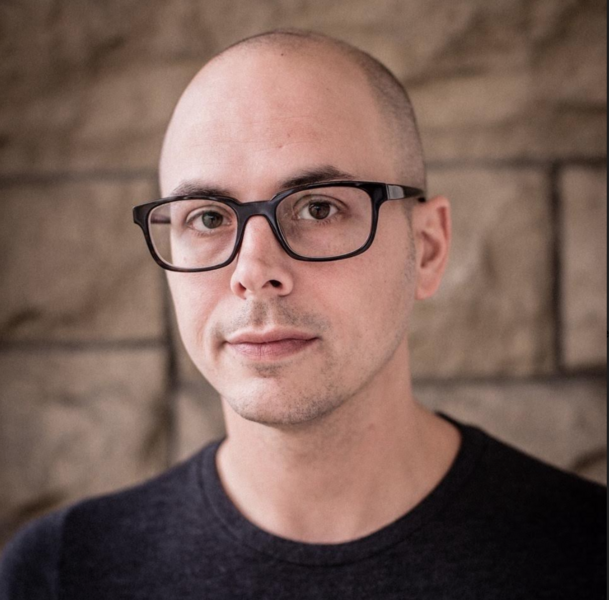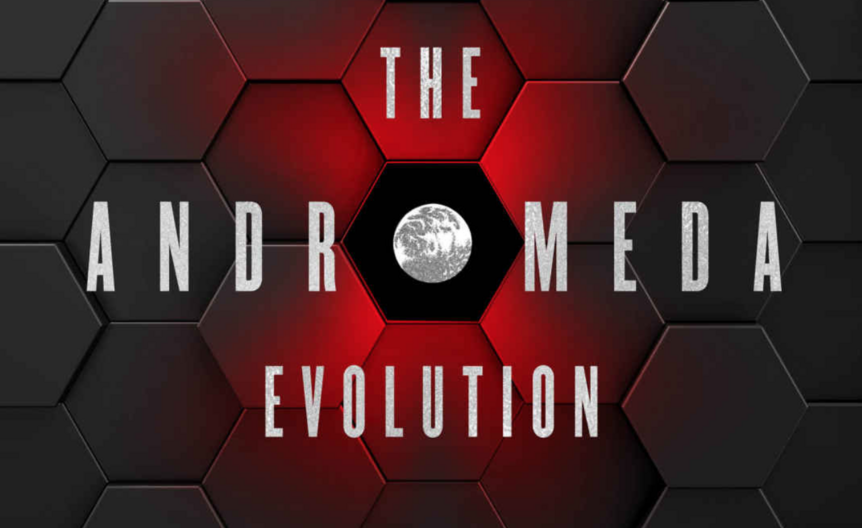Create a free profile to get unlimited access to exclusive videos, sweepstakes, and more!
Daniel Wilson honors Michael Crichton's legacy in The Andromeda Strain sequel, The Andromeda Evolution

The late Michael Crichton, the father of the modern techno-thriller, released his chilling science fiction novel The Andromeda Strain back in 1969. The book introduced readers to a space-born microbe that threatened to obliterate all life on Earth, and two years later director Robert Wise adapted the New York Times bestseller into a classic film that further frightened audiences with its extreme realism and plausible scenario of scientific doom from beyond.
But the story isn't over yet, and the microbe hasn't been totally eradicated. To celebrate the 50th anniversary of The Andromeda Strain, Harper Collins and CrichtonSun are publishing the official sequel to Crichton's masterpiece on November 12.
Written by Ph.D. roboticist and bestselling sci-fi novelist Daniel Wilson, The Andromeda Evolution picks up decades after the first fatal encounter with this unseen alien when its chemical signature is detected in a remote area of the Amazon. A crack team of scientists is dispatched to the region to hunt down the source before the deadly micro-particle spreads across the planet.
Wilson is best known for writing the A.I. uprising novels Robopocalypse and its sequel, Robogenesis — both of which Steven Spielberg picked up to adapt into tentpole features, which now have Transformers filmmaker Michael Bay attached to direct.
SYFY WIRE spoke to the Oregon-based author on the daunting task of filling Crichton's shoes, his recruitment of top NASA minds for research, working with Crichton's literary archive, and what readers can anticipate when The Andromeda Evolution invades book vendors next week.
After the chat, stay tuned for our exclusive chapter excerpt below.
How did this project develop, and what were your initial reactions when approached?
Daniel Wilson: So I got a call from Ernie Cline, the author of Ready Player One and a friend of mine who I see at comic cons every year, and we both had our Spielberg experiences. Ernie told me that he had this strange opportunity and wanted to know if I was interested. He told me the Crichton estate was interested in me because I had this background as a scientist and I wrote science fiction, and they were looking to continue some of Crichton's adventures. And we had a similar background. He started out as a medical doctor but never got a job as a doctor, just started writing fiction.
It's that technical side of the brain combined with the science fiction and techno-thriller side of the brain. So they were interested in just having a conversation. As a kid I discovered Crichton and he's always been one of my favorite authors, and of course I jumped on the opportunity.
What associations did you have with the original novel or the 1971 film adaptation?
CrichtonSun, the Crichton estate, asked me what I'd be interested in. When I thought about the whole body of work I settled on a couple of my absolute favorites like a kid in a candy shop. He's got this huge body of work, and not all of it is novels. For me, it came down to Andromeda Strain and Sphere. I came in and pitched a few different ideas, and really through that discussion we ended out picking Andromeda Strain. I came in with an idea for the story I wanted to tell that really walks this tightrope between honoring Crichton's legacy and finding my own voice, but still making sure that the audience knows they're in good hands and that this is a Crichton adventure. I was over the moon when I found out that they were interested in pursuing this idea for my number one choice out of everything he's ever made. So I got it and I was pumped.
Besides this year being the 50th anniversary of The Andromeda Strain, why is this a great time for a 21st-century sequel?
The first novel has kind of an open ending, so it's begging for a resolution. And the high concept of a microbe collected from the upper atmosphere and infects a town, scientists are racing to figure out what it is before it destroys the world, the mythology can get so much more complicated and deeper. Where did it come from? Is it extraterrestrial? Is it part of ancient Earth? What is the Andromeda Strain? Is it possible to weaponize it? There were all these questions just begging to be answered. I couldn't believe it was the 50th anniversary! This book just doesn't seem like it was written when they were landing on the moon. It was really ripe for exploration.
In working with Crichton's estate, what were the collaborations like, what materials did you have access to, and were there any restrictions?
It was about honoring Crichton and always remembering that I was playing in his sandbox. It was kind of like writing for DC Comics, where you have these action figures that have been around before you, and so you get to pick them up and have the opportunity to tell a story. Ultimately this could have gone wrong in a lot of ways, but it just never did. I had a great time working with his widow, Sherri Crichton. There were a lot of potential pitfalls. Fans and readers love Crichton, and they're going to demand that this novel honors him and really lives up to the precedent that he set with Andromeda Strain.
But this is also Michael Crichton's widow, a real person who has real emotions about a person who I've never met and is a kind of a living legend, but at the end of the day was a real man, and real husband, and real father. So this became a balancing act between honoring the man and the legend for his family and for his fans. I think that by working closely with Sherri we were able to thread the needle and come up with a novel that can make everyone happy.
What was your research process like, and how did you infuse your background in robotics and artificial Intelligence into the story?
Well, this novel has got a roboticist and native characters. This is me, so I'm writing what I know about and what I'm interested in. But this was also a Crichton novel, so it was a top-secret thing. I could only have a few domain experts that could provide feedback, so I went straight to the top. I had the head roboticist at NASA! And a lot of this takes place in the Amazon and there are native tribes. I really wanted to have an expert on indigenous Amazonian people involved to make sure I got my cultural facts right. So the cultural side and the scientific side were the two areas that I focused on, and I got great people to work with on both of those sides.
How has working on this Crichton project changed you as a man, a father, and a writer?
When you write novels it tends to be a pretty solitary endeavor, and you are in charge of a lot. It's the writer and the editor and that's it. When you write comic books you're one voice among many. This was somewhere in between. It made me very happy and very glad that I've worked in a lot of different mediums where I've collaborated with a lot of people. This project was as much about writing it as it was about moderating everybody's voice to make sure that everyone was satisfied.
And I love this novel, it really kicks ass. [Laughs.] It gets crazy and just gets faster and faster. It was nice for me to open up and let go and really get my Crichton on! I'm really happy with the final result. It feels like I'm in the Millennium Falcon flying away from the Death Star and we just blew it up. How did that happen? I can't believe this worked out. It's been a fun ride.
Now enjoy our exclusive excerpt of Chapter One from The Andromeda Evolution by Daniel Wilson and published by Harper Collins:
When it all began again, Paula Araña would have been bored. Bored and sleepy. He was only a year from retirement from the National Indian Foundation of Brazil, known under its Portuguese acronym FUNAI. Stationed on the outskirts of government-protected land stretching across the Amazon basin, the sertanista was in his mid-fifties and had spent his career protecting the undeveloped interior of Brazil. He was sitting under a flickering, generator-run lightbulb, lulled to drowsiness by the rising morning heat and the familiar sounds of the untamed jungle outside the open windows of his monitoring station.
Paulo was at least thirty pounds overweight, sweating in his official olive FUNAI uniform, and seated before an old metal desk loaded with an eclectic array of electronic equipment. As was his habit, he was squinting down at his lap, his concentration focused intently on hand-rolling a tobacco cigarette with his blunt yet surprisingly agile fingers. His movements were sure and quick, with no hesitation or trembling, despite the gray whiskers jutting from his cheeks and his steadily failing eyesight.
As he lit and puffed contentedly on his cigarro, Paulo did not notice the red warning light flashing on his computer monitor. It was a small oversight, normally harmless, and yet on this morning it carried consequences that had already begun to snowball exponentially. The unseen light was hidden behind the curl of a yellow sticky note (directions to a local fishing hole). It had been blinking unheeded since late afternoon the day before. The flashing pixels were signaling the beginning of a global emergency.
A thousand feet overhead, an Israeli-made unmanned aerial vehicle (UAV) the size of a school bus was thrumming steadily over the vast Amazonian jungle. Dubbed the Abutre-rei — "King Vulture" in Portuguese — its wheels were caked in reddish jungle mud from a rough landing strip and its white hull streaked with the corpses of insects. Nevertheless, the drone was sleek and predatory — like an artifact from the distant future that had slipped backward in time to hover over this prehistoric land. The Abutre-rei was on an endless mission, sweeping back and forth over a green sea of jungle canopy that stretched to all horizons. The unblinking black eye of its gyro-stabilized, self-cleaning camera lens was trained on the ground below, and a Seeker ultra-wideband synthetic-aperture radar unit invisibly illuminated the complex terrain with timed pulses of radio waves that could penetrate rain, dust, and mist.
Back and forth, back and forth.
The drone was specialized for environmental monitoring and photogrammetry — relentlessly constructing and reconstructing an ultra-high-resolution map of the Amazon basin. Inside his monitoring station, Paulo only half watched as the constantly updating image knitted itself together on his monitor. An occasional haze of stale bluish smoke rose from the spit-soaked cigarro parked in its usual spot at the corner of his mouth.
Everything changed at precisely 14:08:24 UTC.
At that moment, a new vertical strip of mapped terrain was added to the composite image. The unseen warning light was displaced fifty pixels to the left, just peeking out from under the sticky note. Stunned, Paulo Araña stared at the pulsing red spot.
In recovered webcam footage, he could be seen blinking frantically, trying to clear his eyes. Then he snatched away the sticky note and crumpled it in his fingers. The dot was located beside a small thumbnail image of something the Abutre-rei had found in the jungle. Something Paulo could not even begin to explain.
Paulo Araña's job at FUNAI was to monitor and protect an exclusion zone established around the easternmost region of the Upper Amazon—over thirty-two thousand square miles of unbroken jungle. It was a priceless treasure, site of both the largest concentration of biodiversity on earth and a terra indigena that was home to approximately forty uncontacted Amazonian tribes — pockets of indigenous human civilization with little or no exposure to the technology and disease of the outside world.
With such natural riches, the land was under constant attack. Like an army of termites, destitute locals were motivated to sneak into protected territory to fish virgin rivers or poach valuable endangered species; loggers were tempted to bring down the huge kurana, cedar trees that could fetch thousands of dollars on the black market; and of course, the hordes of narcotraficantes stopping over on their way from southern Brazil to Central America were a constant and brutal menace. Preserving the wilderness required unwavering attention.
With a nicotine-stained finger, Paulo pecked a key to activate Marvin, a computer program housed in a beige plastic box wedged under his desk. Acquired years ago from a joint research effort with an American graduate program, the battered box was unremarkable save for a faded printout of an old Simpsons cartoon character taped to the outside.
On the inside, however, Marvin housed a sophisticated neural network — an expert system that had been trained on thousands of square miles of real jungle imagery, and over a hundred million more simulated.
Marvin could reliably identify a quarter-mile airstrip hacked out of the remote jungle by drug couriers; or the logging roads that threaded like slug trails into the deep woods, with larger trees intentionally left unmolested as cover; or even the occasional maloca huts built by the uncontacted tribes — rare and intimate glimpses of another world.
Most importantly, the program could scan ten square miles of super-high-resolution terrain in seconds — a feat impossible for even the most dedicated human being.
Paulo knew that Marvin was muito inteligente, but it had outright rejected this new data as not classifiable. This was something the algorithm had never seen, not in all its petabytes of training data. In fact, it was something nobody had ever seen.
The output simply read: classification results: unknown. Marvin hadn't even offered a probability distribution.
Paulo didn't like it. He made a kind of surprised grunt, the cigarette trembling on his lower lip. Tapping keys rapidly, he enlarged the thumbnail image and examined it from every available angle, trying to dismiss it as a glitch. But it was no use — the strange sight defied explanation.
Something black was rising from the deepest jungle. Something very big.
Paulo waved smoke away with one hand, his gut pressing against the cool metal desk. He squinted at the dim screen, pushing his face closer. His balding head was coated in a cold sweat, gleaming under the stark light of the bulb overhead.
"No," Paulo was recorded as saying to himself. "Isto é impossível."
Thumbing a switch on a battered 3-D printer, Paulo waited impatiently as the raw image data was transferred to the boxy machine. The shack soon filled with the warm wax smell of melting plastic as an array of pulsing lasers set to work. Inch by inch, a hardened layer of plastic rose from the flat bed of the printer. As the seconds ticked by, the formless sludge resolved into a three-dimensional topographic map.
The pale white plastic was rising up in the detailed shape of the jungle canopy, looking for all the world like a bed of cauliflower.
Rolling and lighting yet another cigarette by instinct, Paulo tried not to watch as a new world slowly emerged from the unformed ooze. Each layer hardened in seconds, quickly firming into a scale model of the jungle. Wheezing slightly, Paulo cracked his knuckles one by one, staring blankly and smoking in silence.
In the rare instance that Marvin returned less than an 80 percent classification probability, it was up to Paulo to make the final determination. He did so by employing a carefully honed method that was strictly unavailable to the machine: his sense of touch.
Touch is the most ancient sensory faculty of any living organism. The human body is almost entirely covered with tactile sensors. The neural circuits related to the somatosensory system overlap with multiple other areas of sensing, in ways both unknown and unstudied. Of particular sensitivity are the countless mechanoreceptors in our lips, tongue, feet, and, most especially, our fingertips. This was Paulo's talent — one area where man rose above machine.
Eyes half closed, he began with static contact, lightly placing all eight of his finger pads on the model surface. Gently, Paulo added steady pressure to establish a touch baseline. And finally he scanned his fingers laterally over the meticulously rendered folds of jungle canopy.
Properly honed, the discriminatory power of skin receptors can exceed visual acuity. Every inch of the model's texture corresponded to roughly one hundred yards of real-world terrain, resulting in contours only detectable through a cutaneous spatial resolution far superior to any computer's image analysis, no matter how clever the machine.
Paulo could run his fingertips over the roof of the jungle and feel whether an unclassified data sample was the ragged, chain-sawed destruction of an airstrip or the smooth banks of an innocent new river tributary.
Eyes closed, limp cigarette in the corner of his mouth, Paulo slouched, his face to the ceiling. His outstretched hands traced the surface of the jungle as if he were a blind god touching the face of the planet.
When his questing fingers found the hard, unnatural lines of the . . . thing, Paulo Araña swallowed a low moan in the back of his throat. Whatever it was, it really did exist. But there were no roads nearby. No sign of construction. It could not be possible—out there alone and colossal among the primordial trees — and yet it was as real as touching the stubble on his own face.
The thing in the jungle rose at least a hundred feet above a skirt of raw wilderness, long and slightly curved, like a barricade. It spoiled the sanctity of a rain forest otherwise unbroken for thousands of square miles. And it seemed to have appeared from nowhere.
Around the perimeter of the structure, Paulo could feel a crumbling sensation. It was the texture of death — thousands of virgin trees collapsed and sick. This thing was a kind of pestilence, polluting everything nearby.
For a long moment, Paulo sat and contemplated raising an alert on the antiquated FUNAI-issued shortwave radio sitting on his desk. His eyes lingered on its silver dials as the generator puttered outside, providing the trickle of electricity necessary to connect this isolated shack to the rest of the world.
Pushing away from the desk, Paulo felt blindly under the drawers until his fingers brushed against a business card taped beneath. It contained the phone number of a young American who had recently contacted Paulo.
Claiming to be a businessman, the man had explained that a Chinese aircraft had recently been lost over this territory. His company was willing to pay a hefty price for information about it. Paulo had assumed (and continued to assume) that the American was looking for pieces of airplane wreckage, although he hadn't said that. Not exactly. Instead, the man had said specifically to report "anything strange." And this was definitely that.
Using his palms to wipe away the sheen of sweat that soaked his face like tears, Paulo stared at the business card and punched a number on his desk phone.
A man with an American accent answered on the first ring.
"I'm glad you called, Mr. Araña," said the voice. "I was right to trust you."
"You already know?" Paulo asked, glancing at the computer screen.
"Marvin rang me just now, when you registered the anomalous classification," said the voice. "He's smarter than he looks."
The Americans and their trickery. It never ceased to amaze Paulo. A people who seemed so trusting and forthright — all smiles . . . and yet.
"What now?" asked Paulo.
"You can relax, Mr. Araña. We've got people taking care of it. You'll be well compensated for your assistance. But I am curious," asked the voice. "What do you think it is?"
"I know it is not an error, senor. It's really out there. I have touched it."
"Well, then?"
Paulo thought for a moment before answering. "It is a plague. Killing everything it touches. But I can never know what it is."
"And why is that?"
"Because that thing out there . . . it was not built by any human hands."





























